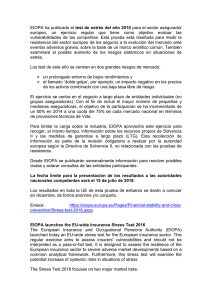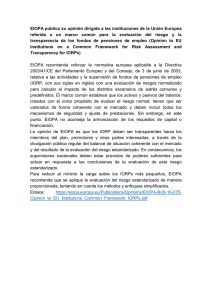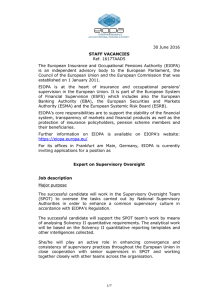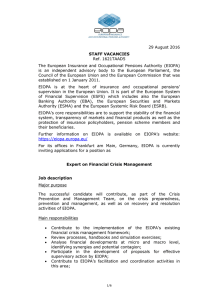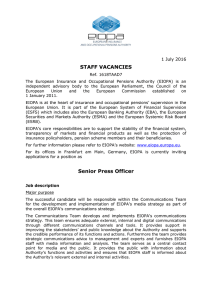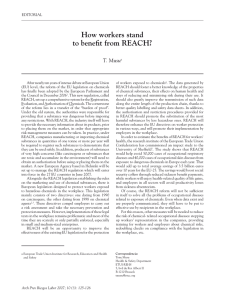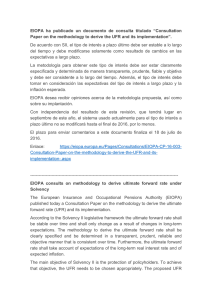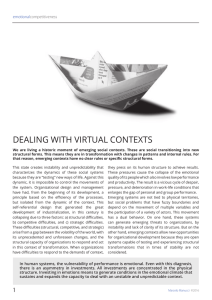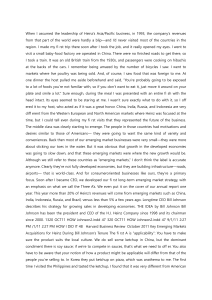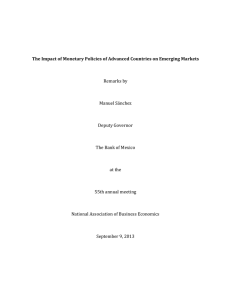EBA, EIOPA y ESMA
Anuncio
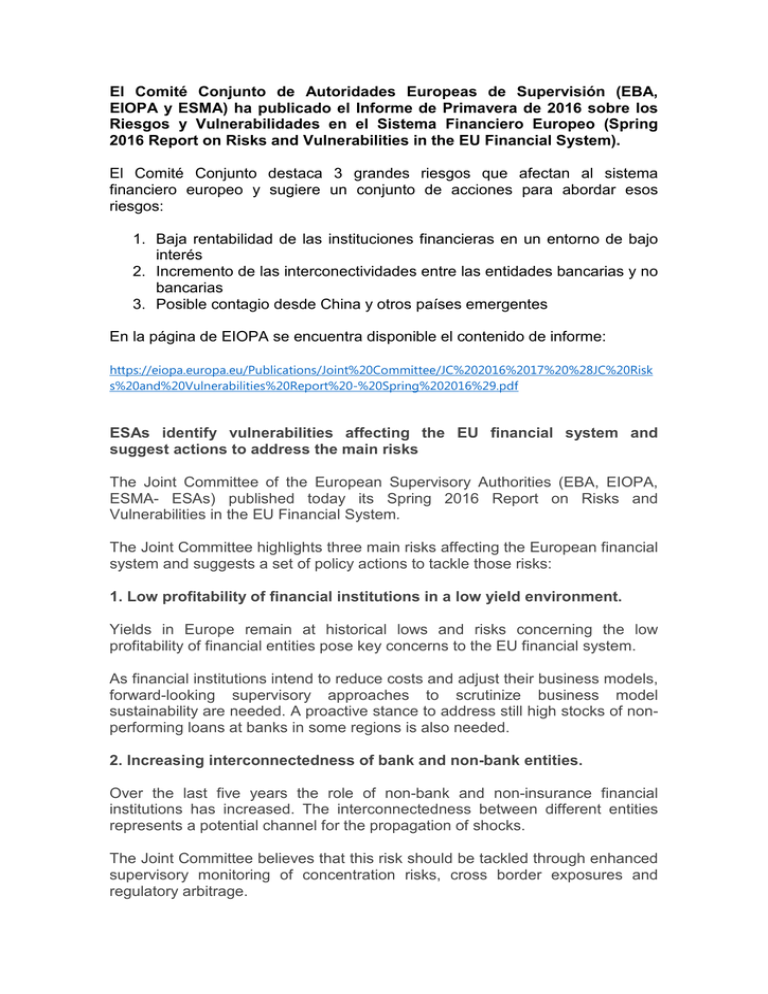
El Comité Conjunto de Autoridades Europeas de Supervisión (EBA, EIOPA y ESMA) ha publicado el Informe de Primavera de 2016 sobre los Riesgos y Vulnerabilidades en el Sistema Financiero Europeo (Spring 2016 Report on Risks and Vulnerabilities in the EU Financial System). El Comité Conjunto destaca 3 grandes riesgos que afectan al sistema financiero europeo y sugiere un conjunto de acciones para abordar esos riesgos: 1. Baja rentabilidad de las instituciones financieras en un entorno de bajo interés 2. Incremento de las interconectividades entre las entidades bancarias y no bancarias 3. Posible contagio desde China y otros países emergentes En la página de EIOPA se encuentra disponible el contenido de informe: https://eiopa.europa.eu/Publications/Joint%20Committee/JC%202016%2017%20%28JC%20Risk s%20and%20Vulnerabilities%20Report%20-%20Spring%202016%29.pdf ESAs identify vulnerabilities affecting the EU financial system and suggest actions to address the main risks The Joint Committee of the European Supervisory Authorities (EBA, EIOPA, ESMA- ESAs) published today its Spring 2016 Report on Risks and Vulnerabilities in the EU Financial System. The Joint Committee highlights three main risks affecting the European financial system and suggests a set of policy actions to tackle those risks: 1. Low profitability of financial institutions in a low yield environment. Yields in Europe remain at historical lows and risks concerning the low profitability of financial entities pose key concerns to the EU financial system. As financial institutions intend to reduce costs and adjust their business models, forward-looking supervisory approaches to scrutinize business model sustainability are needed. A proactive stance to address still high stocks of nonperforming loans at banks in some regions is also needed. 2. Increasing interconnectedness of bank and non-bank entities. Over the last five years the role of non-bank and non-insurance financial institutions has increased. The interconnectedness between different entities represents a potential channel for the propagation of shocks. The Joint Committee believes that this risk should be tackled through enhanced supervisory monitoring of concentration risks, cross border exposures and regulatory arbitrage. 3. Potential contagion from China and other emerging markets. After a decade of positive contribution to the global economic growth, economic activity in China and other emerging markets has started to recede. The Joint Committee calls on national supervisors to include emerging market risk in sensitivity analyses or stress tests and to scrutinise optimistic assumptions of financial institutions with regard to emerging market exposure and returns from emerging market business.
